Wix and Squarespace are two of the world’s most popular store builders. Both let you create an online store without needing to code; and both are widely used by small businesses, creatives, and entrepreneurs.
But which platform is the better choice for you?
Well, in this comparison, I’m going to walk you through seven key reasons to use Wix instead of Squarespace, and seven reasons to use Squarespace instead. By the end, you’ll have a much better sense of which tool is right for your ecommerce project.
First up, my quick verdict on the platforms, followed by a more extensive comparison.
My quick verdict on the Wix vs Squarespace debate
If you need access to lots of apps and integrations, or you need features like multilingual support, advanced AI tools, and a wider choice of payment gateways, then Wix is the stronger option. It’s also the only one of the two platforms to give you a completely free plan.
Squarespace, however, remains the better choice if your priority is ease of use and design quality. Its templates are more polished, all of them are responsive, and its drag and drop interface is one of the most user-friendly I’ve come across. It’s also a stronger solution if you plan on selling gated content.
Both platforms could do better however when it comes to international selling — neither solution is great for displaying product prices in multiple currencies, or facilitating checkout in a user’s local currency. For international selling I’d be more inclined to look in the direction of Shopify.
Why choose Wix over Squarespace?
1. A completely free plan is available
Unlike Squarespace, which only gives you access to a two-week trial, Wix comes with a free plan that can be used indefinitely.
This comes with some fairly big drawbacks however: it displays Wix branding prominently on your site, doesn’t let you connect it to a custom domain name (yoursitename.com etc.) and crucially, prevents you from selling products.
But for testing the platform out at your own pace, or for creating a simple online presence, Wix’s free plan can be useful.
2. It gives you more templates to choose from
Wix offers a huge library of design templates — 2600+ in total — while Squarespace limits you to around 190.
Although Squarespace’s template range boasts themes with real ‘wow’ factor — they are among the most attractive web design templates I’ve come across while testing store builders — the sheer number of Wix designs available usually makes it easier to find something appropriate for your industry or aesthetic.
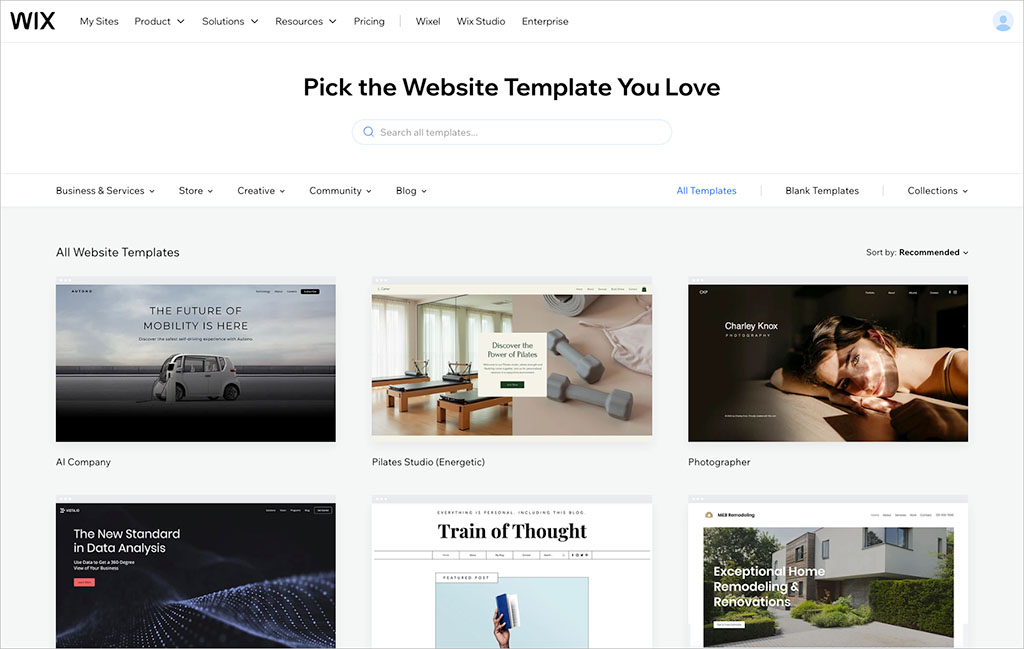
3. It lets you work with more payment gateways
Wix gives you a far wider range of payment processing options than Squarespace.
It integrates with 80–100 payment gateways, whil Squarespace only lets you work with a few (Stripe, PayPal, Square, and — depending on your region — some buy-now-pay-later tools).
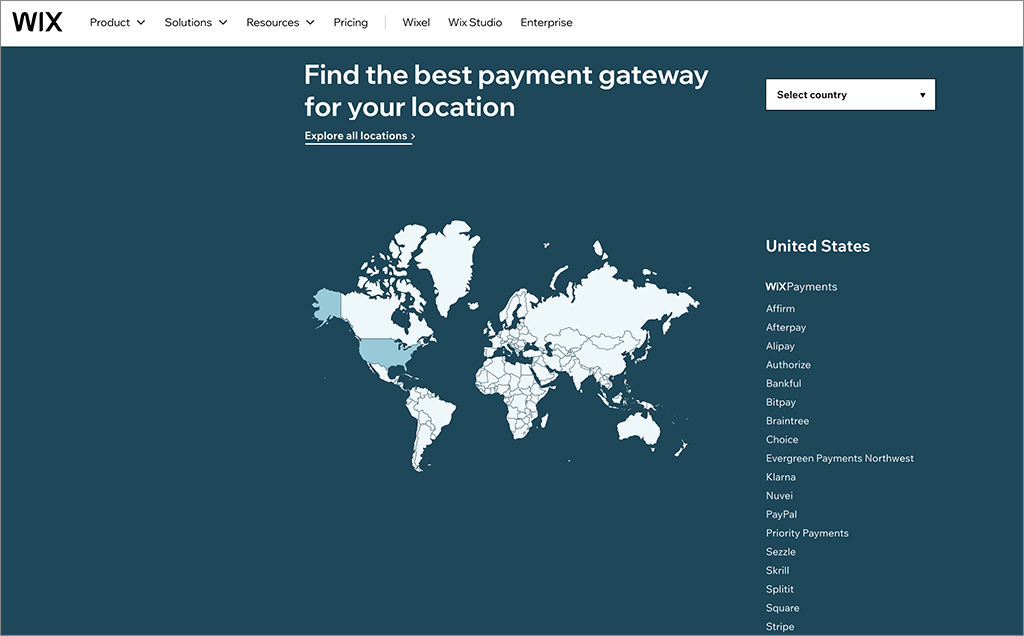
This flexibility is important, because it lets you:
- pick the processor with the lowest transaction fees
- use gateways that are most popular in your local market
- offer a wider choice of payment methods to your customers.
4. Wix comes with more advanced AI features
Over the past couple of years, both Squarespace and Wix have been introducing AI features into their feature sets.
In Squarespace, these come in the form of its AI ‘Blueprint’ feature. This asks you a few questions and — based on how you answer these — builds you a simple website.
However, Wix has gone further here— you can use its AI tools not just to build page layouts but to:
- write site copy
- generate images
- create emails
- help with SEO.
So for users who want AI to assist not just at the setup stage, but with ongoing store management and marketing, Wix can be a better choice.
5. Wix offers free translation features
If you need to present your online store in more than one language, you’ll find this cheaper to do with Wix.
You simply install its free Wix Multilingual app, and you can translate your site into 180+ languages.
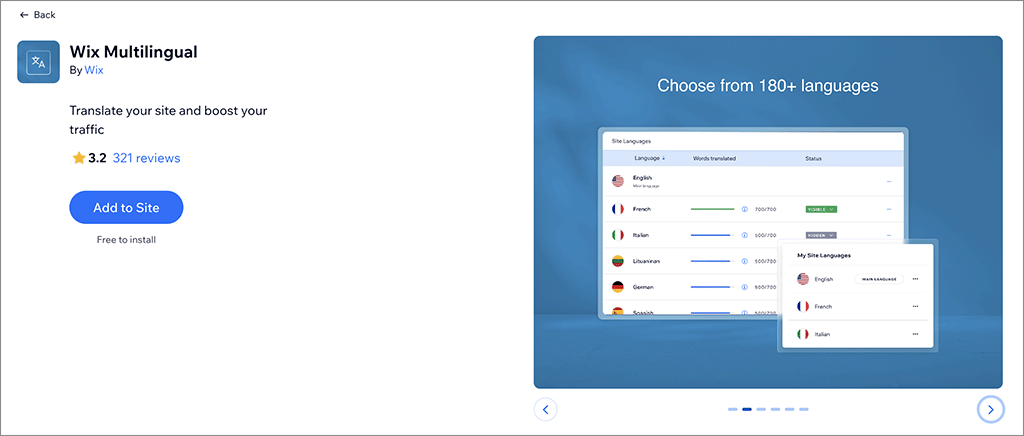
By contrast, Squarespace relies on the third-party Weglot integration for multilingual functionality. While effective, Weglot charges based on word count and the number of languages you’re working in — meaning that things can quickly get expensive.
6. Wix lets you display products in multiple currencies
Neither Wix or Squarespace is brilliant for multi-currency selling, because — out of the box at least — neither platform lets your users check out in their own currency.
Wix does at least let you present product prices in multiple currencies (but only on its more expensive plans).
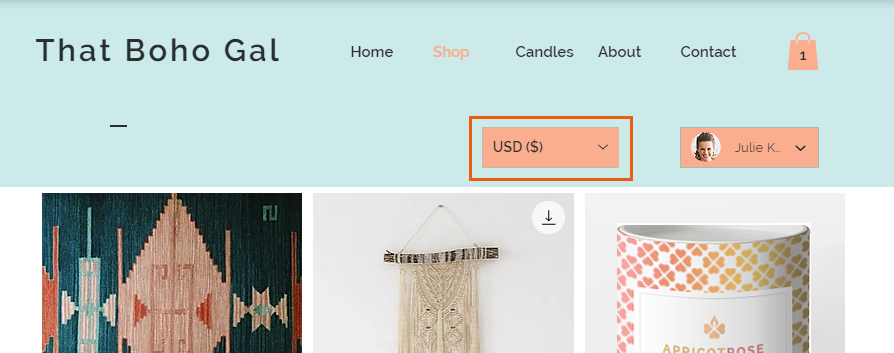
If international selling capability is a key requirement for you, there are platforms that do this considerably better — BigCommerce and Shopify being the two obvious ones.
7. Wix offers a bigger app ecosystem
When it comes to extending your site’s functionality via apps and integrations, Wix has the edge.
Its App Market contains 800+ integrations, which range from booking systems and live chat tools to accounting and marketing apps.
Squarespace’s Extension Store, by contrast, only offers around 45 integrations. These are carefully vetted and well-built — but ultimately leave you with less options for adding new features to your online store, or integrating it with other tools and services.
Wix pricing
Wix plan
Monthly pricing (USD)*
Free
$0
Light
$17
Business
$39
Core
$29
Business Elite
$159
* Annual commitment required
Why choose Squarespace over Wix?
1. Squarespace is much easier to use
Squarespace’s interface is widely regarded as one of the best in the website builder space — and of the site builders I’ve tested, I’ve certainly found it one of the very easiest to use. It’s clean, elegant, and intuitive, and when I’ve handed sites built with Squarespace over to clients, they’ve never had trouble getting to grips with it.
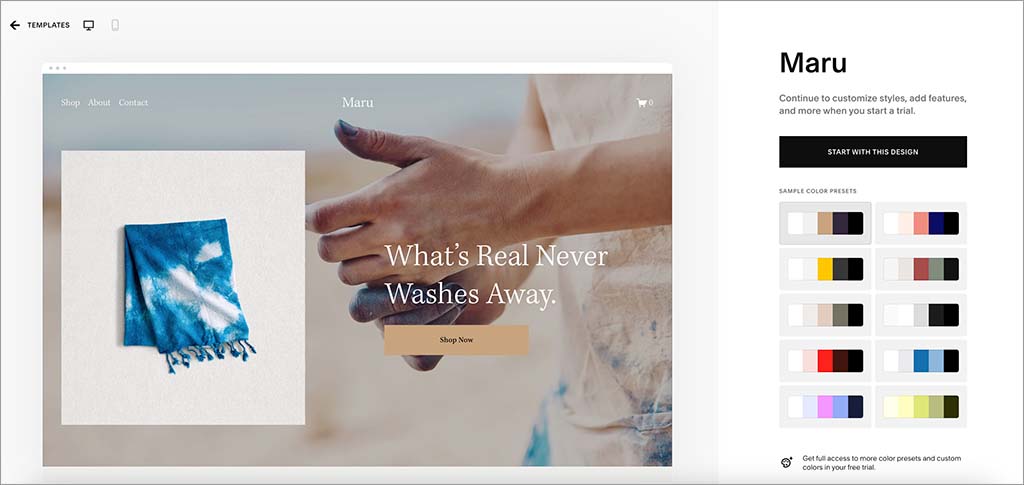
Wix isn’t particularly hard to use — but its interface just feels a bit more dated or complicated. If simplicity is your top priority, Squarespace wins.
2. Squarespace gives you a fully responsive website
Squarespace templates are all 100% responsive — meaning they automatically adjust to any screen size, whether that’s a smartphone, tablet or widescreen monitor (see my screenshot below for an example of a Squarespace site in smartphone view).
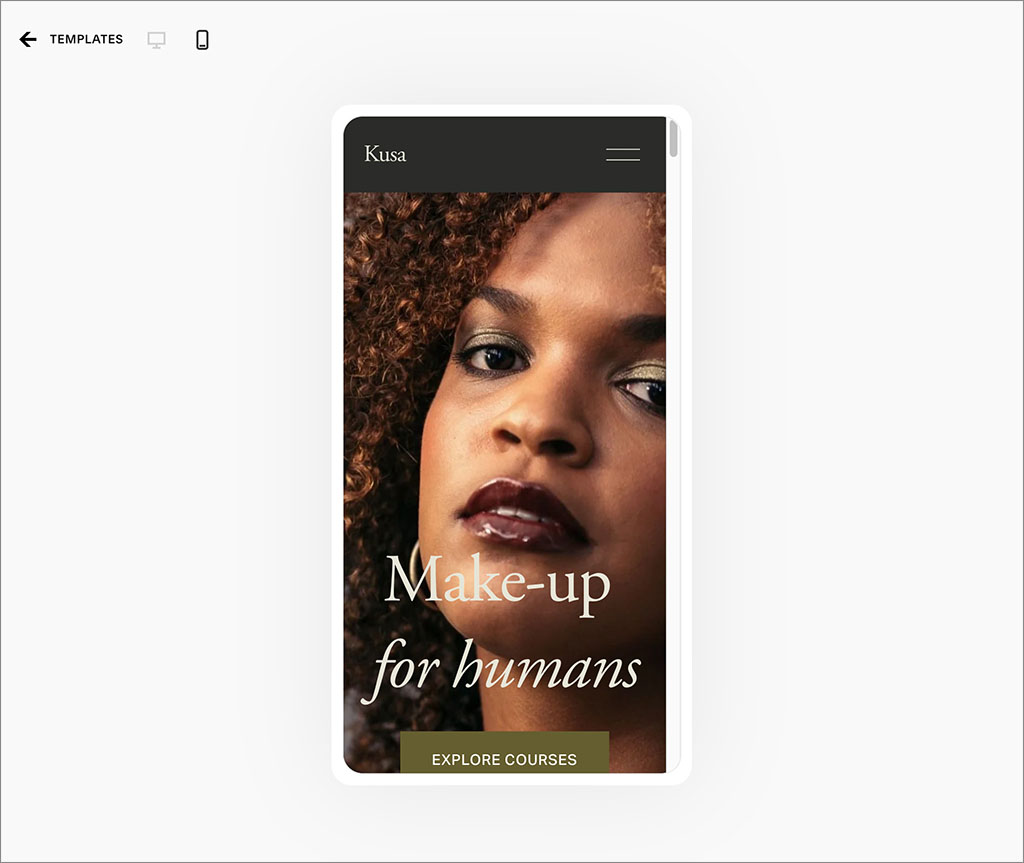
Wix sites can be made mobile-friendly, but they’re not fully responsive in the same way that Squarespace ones are.
Squarespace’s responsive templates ultimately make it a more reliable choice for ensuring your site looks good everywhere — and because responsive layouts aligns with Google’s preferred approach to design, arguably give the platform a slight SEO edge over Wix too.
3. Squarespace’s templates are more attractive
A bit of a subjective one this, but I’d argue that Squarespace web design templates look nicer than Wix ones. They’re more original and striking in nature than those of its rival.
If you want to create an online store with more original aesthetic, Squarespace generally wins.

4. It’s easier to export site content with Squarespace
Unlike Wix, Squarespace gives you tools to export your store’s static pages and blog posts.
So if you decide to migrate to another platform in the future, youll find this easier to do with Squarespace.
5. Squarespace sites come with unlimited storage
All Squarespace plans include unlimited storage — something that’s particularly important if you plan on selling digital products on your store.
By contrast, Wix places limits on storage depending on your plan — with just 2 GB provided on its entry-level “Light” plan.
6. You get more customization options from Squarespace
Unlike Wix, Squarespace gives you the option to add custom CSS to your site (code that lets you alter its design in more profound ways than the default style controls provided by site builders).
It also offers a wider range of typefaces than Wix (1,000 Adobe fonts and 600 Google ones) — and this makes it easier to match your site’s typography to your brand.
7. Squarespace is better for selling gated content
Squarespace is the stronger option for selling memberships or premium content. Its built-in Members Site feature lets you easily sell access to gated courses, articles or videos.
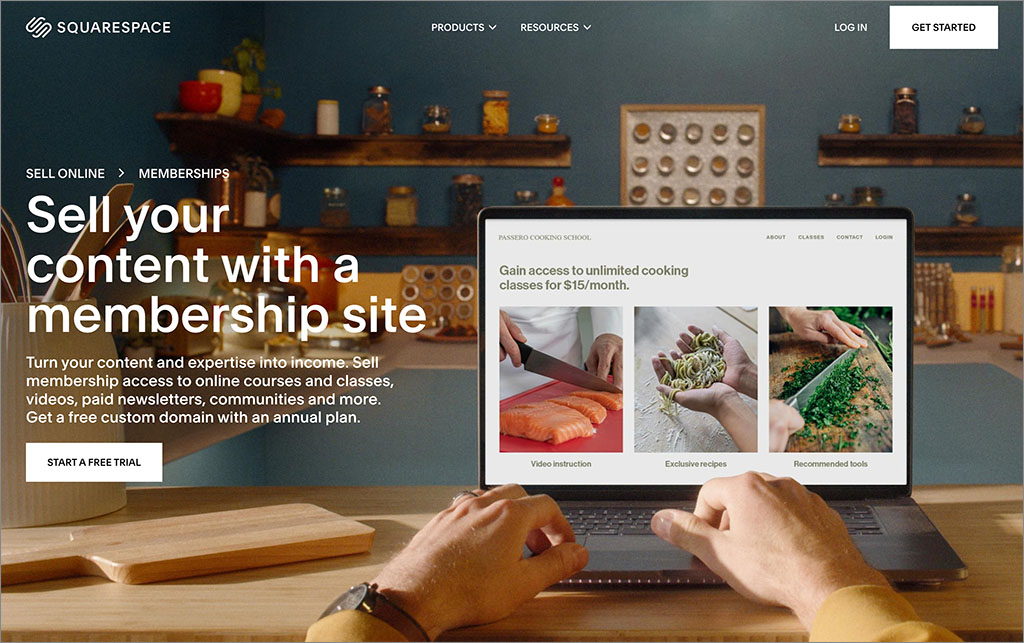
You can paywall content with Wix too, but doing so usually requires the installation of apps and more configuration work.
Squarespace pricing
Squarespace plan
Monthly pricing (USD)*
Basic
$25
Core
$36
Plus
$56
Advanced
$139
* If paid for on an annual basis, the above plans are reduced to $16, $23, $39 and $99 respectively.
User reviews and ratings
So far in this comparison you’ve heard my take on the pros and cons of Wix vs Squarespace. But what do real-world users make of both platforms? To find out I collated date from some popular software user review sites — see the tables below to find out how Wix and Squarespace have been received by their respective userbases.
Wix user reaction
Review site
User rating (out of 5)
Capterra
4.4
G2
4.0
TrustPilot
4.3
TrustRadius
4.3
Average
4.3 out of 5
Squarespace user reaction
Review site
User rating (out of 5)
Capterra
4.6 (3,301 reviews)
G2
4.4 (1,082 reviews)
TrustPilot
1.2 (1,439 reviews)
TrustRadius
4.3 (323 reviews)
Average
3.6 out of 5
So based on the above aggregated data, Wix technically wins the user rating battle. However, it’s worth pointing out that Squarespace performed as well or better than Wix on all the review sites I looked at except TrustPilot, where it scored considerably lower than Wix.
Wix vs Squarespace: the verdict
So, which platform should you choose? Well, as ever with store builders, it depends on your requirements:
- Go with Wix if you need maximum flexibility — more payment options, advanced AI features, multilingual support and a bigger app ecosystem.
- Choose Squarespace if ease of use and design quality are your priorities. Its templates are more elegant, easier to customize and all of them are fully responsive. Squarespace is usually the better option for selling gated content too.
Wix vs Squarespace — pros and cons summary
Key reasons to use Wix
Key reasons to use Squarespace
Entirely free plan available
Much easier to use
Larger range of templates
Fully responsive templates
More payment gateways
More attractive templates
Better multi-currency features
Unlimited storage
More apps and integrations
Better for selling gated content
If international selling is a key requirement however, you might want to consider an alternative store builder. And speaking of which…
Key alternatives to Wix and Squarespace for ecommerce
If you’re looking for an alternative store builder to Wix and Squarespace, Shopify is usually the first port of call. It’s one of the most popular online store builders in the world, and with good reason: it’s packed with professional selling tools, supports thousands of integrations, and is particularly strong when it comes to international selling, multi-channel selling and point-of-sale applications.
While Wix and Squarespace are arguably website builders with ecommerce features tagged on, Shopify was built from the ground up to be an online store building solution. You can read our Shopify review here.
Other strong options include BigCommerce, which is geared towards larger businesses that need advanced ecommerce functionality and scalability, and WooCommerce, which turns WordPress sites into fully fledged online stores and is great for those who want maximum control and flexibility.
All three platforms give you more advanced ecommerce features than either Wix or Squarespace, making them worth a serious look if selling online is your main priority.
Chris Singleton is the Founder and Director of Ecommercetrix.
Since graduating from Trinity College Dublin in 1999, Chris has advised many businesses on how to grow their operations via a strong online presence, and now he shares his experience and expertise through his articles on the Ecommercetrix website.
Chris started his career as a data analyst for Irish marketing company Precision Marketing Information; since then he has worked on digital projects for a wide range of well-known organizations including Cancer Research UK, Hackney Council, Data Ireland, and Prescription PR. He then went on to found the popular business apps review site Style Factory, followed by Ecommercetrix.
He is also the author of a book on SEO for beginners, Super Simple SEO.
